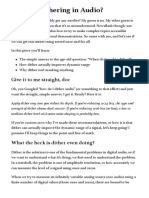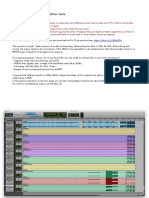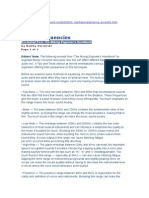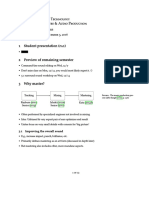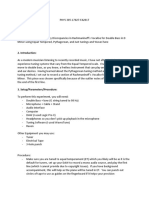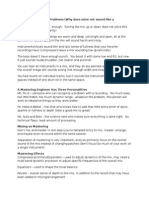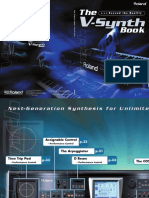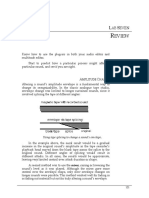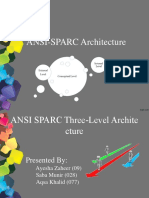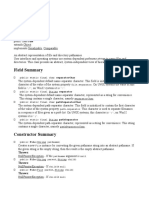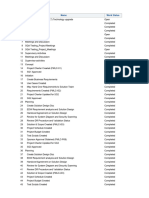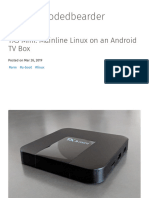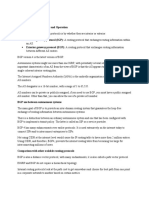Audio Mastering: Separating the science from fiction
www.routledge.com/9781032359021
This document is to support your development exploring the effect of truncation caused by
bit depth reduction and how dither can practically have a positive effect on this.
Refer to indexed sections:
Dither 218, 231
Truncation 40, 218
To fully comprehend the importance of avoiding the negative effect of truncation it is helpful
to practically observe it sonically. A simple test to conduct is to take a 24 or 32 bit mix file
and export it to 16 bit without any dithering applied. You would need to check your exporting
options to make sure no dither is set in the background by the DAW. Because really, from
the DAW programmers point of view, why would you want to do this? Often even without, a
maths rounding principle is applied anyway. Hence the automatic application of dither in a
system is normal. Once you have heard the effect of truncation distortion you will see why
dither is used everywhere appropriate in digital audio signal paths.
After confirming the export parameters are correct, take the exported file and load the
truncated 16 bit audio sample to a new track in the DAW sample aligning with the original.
Reverse the polarity of one of the tracks and render the null outcome, reload this to a new
track in the DAW and place sequentially on the timeline. The export will appear to have no
signal on the graphics generated but if you normalise, the lower level material will now
appear in the graphics. This is everything below the truncated 16 bit signal from 96dB down.
Be careful in playing this back as it will be loud and distorted. Hence turn down the track
volume to your calibration reference level first, and then hit dim to observe the outcome. It
will be nasty! That is truncation distortion.
Another way to observe how this outcome practically affects the dynamic range is to observe
a fade tail. This is often best achieved using a reverb tail. Use a vocal phrase or snare to
create a reverb pulse with a long tail. Render this at 32 bit and edit so you are only observing
the last decay of the reverb tail. Export without dither and reload to the DAW as before. You
will clearly hear in comparison the end of the reverb tail is shorter on the truncated version, it
is clipped and fizzes to distortion at the very end of the fade. You may need to turn up the
monitor level to play the end of the tail to hear this clearly. In doing so, be careful not to play
the ‘loud’ parts.
Now to hear the effect applying dither has on truncation distortion, bounce your initial 32 bit
reverb tail render but apply a noise shaping dither. Reload and align in the DAW, listening
between the original and the dithered version you will now notice little difference in the tail
length now the dither has been applied. Equally this will contain none of the truncation
distortion the previous truncated render contains. You will notice a large noise floor in
comparison to the graphic to the original render relative as the noise of the dither process
creates a higher noise floor, but you will not hear this loudly as it is generated mainly in the
inaudible part of the higher audio spectrum. If you now conduct the same render but with
different dither types you will start to observe how they respond. Broadband dithers
(linear/triangular) will generate more audible noise, but they will have less effect on the tone
overall as a theme. Equally with some recordings where there is naturally a higher
background noise this extra noise level can help to mask/smooth the outcome.
�Going back to the full song and converting from 24 to 16 bit but applying different dithers you
will start to observe these tonal shifts and how the overall sonic is effected. You could argue
these are minor shifts, but so is a HS 1kHz +0.1dB, you can still hear it. Everything adds to
the outcomes overall and every percentage point counts to the overall outcome and is
equally important. Know your dithers through testing, and you will be able to achieve the
most effective outcome.
I would recommend testing the Weiss, Pow-R, Appogee, Waves, Isotope and Sonoris dithers
to gain a full comprehension of how they differ in outcome.
As we move into a new dawn of HD audio in delivery, the need of dither still exists in the
conversion of higher bit depth sessions to 24bit in delivery. But you could argue no dither is
required as it is below the audible hearing range. But the harmonics generated affect all the
spectrum, hence once again why testing is key. The correct outcome is the one you can
observe sounds the best.
It is also worth noting that there is no need to apply any dither when converting to lossy
formats from lossless. The audio is not being truncated but encoded removing unnecessary
data relative to the compression codec and settings. This is not the same as LPCM bit depth
reduction where truncation will take place.
